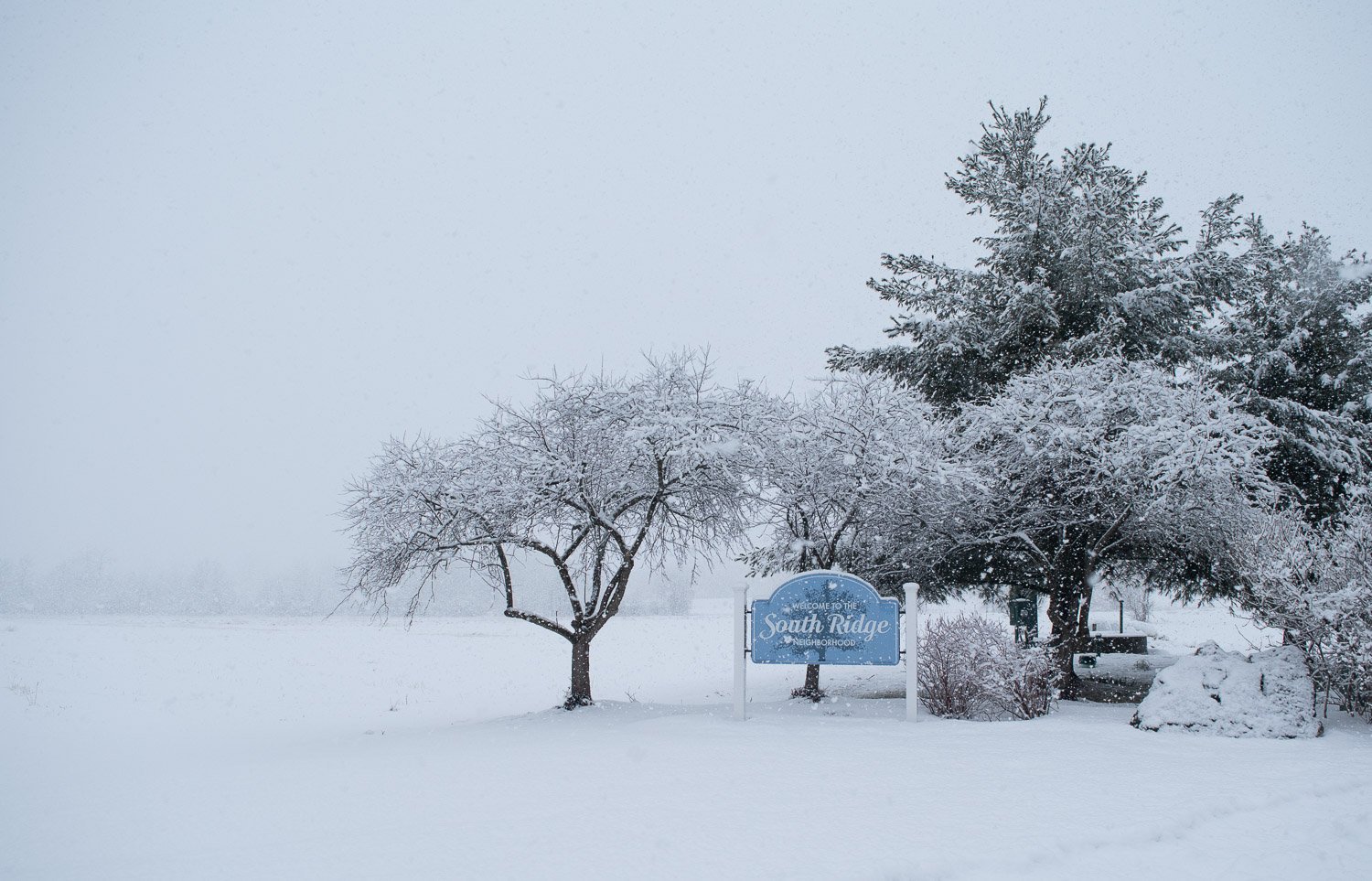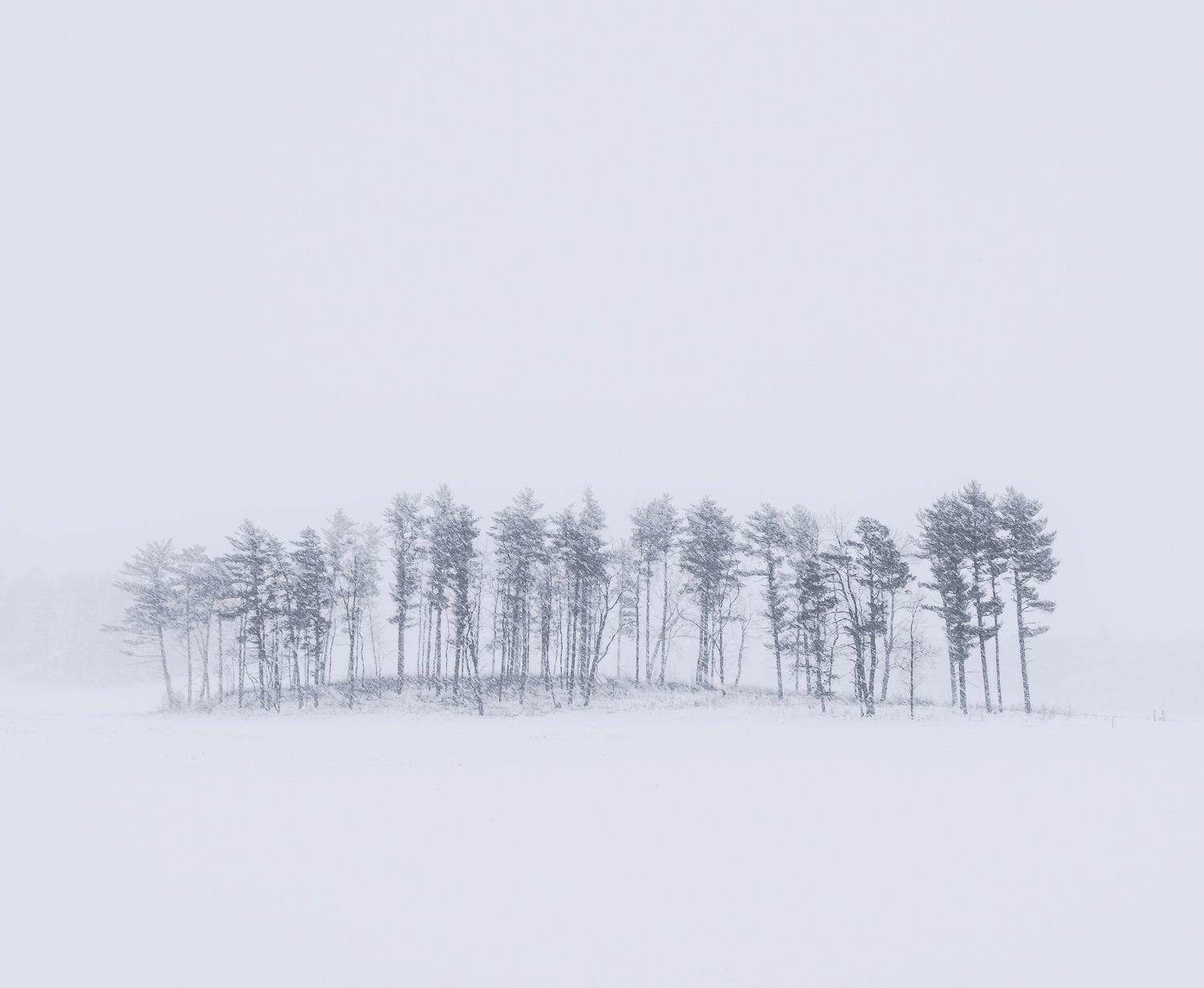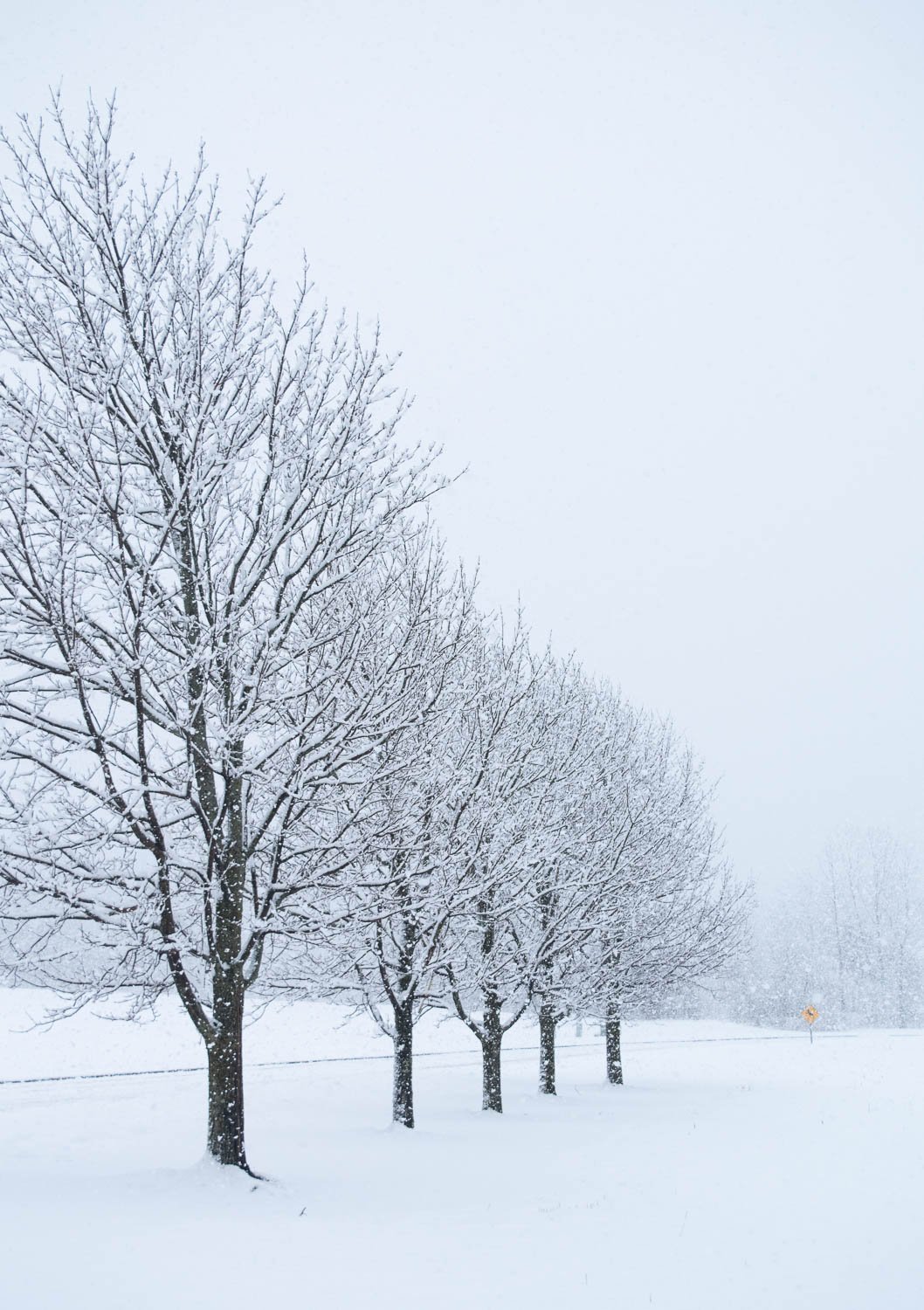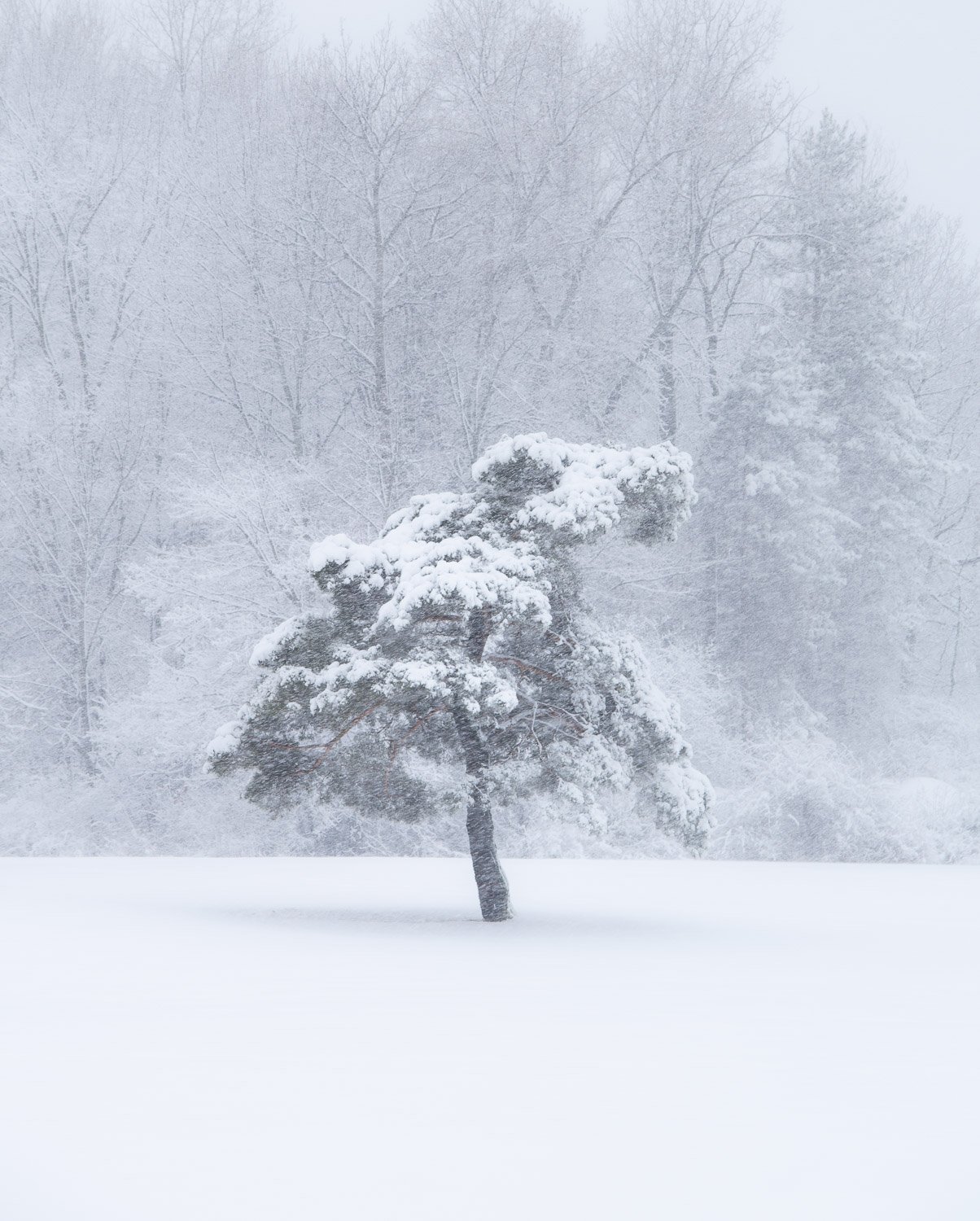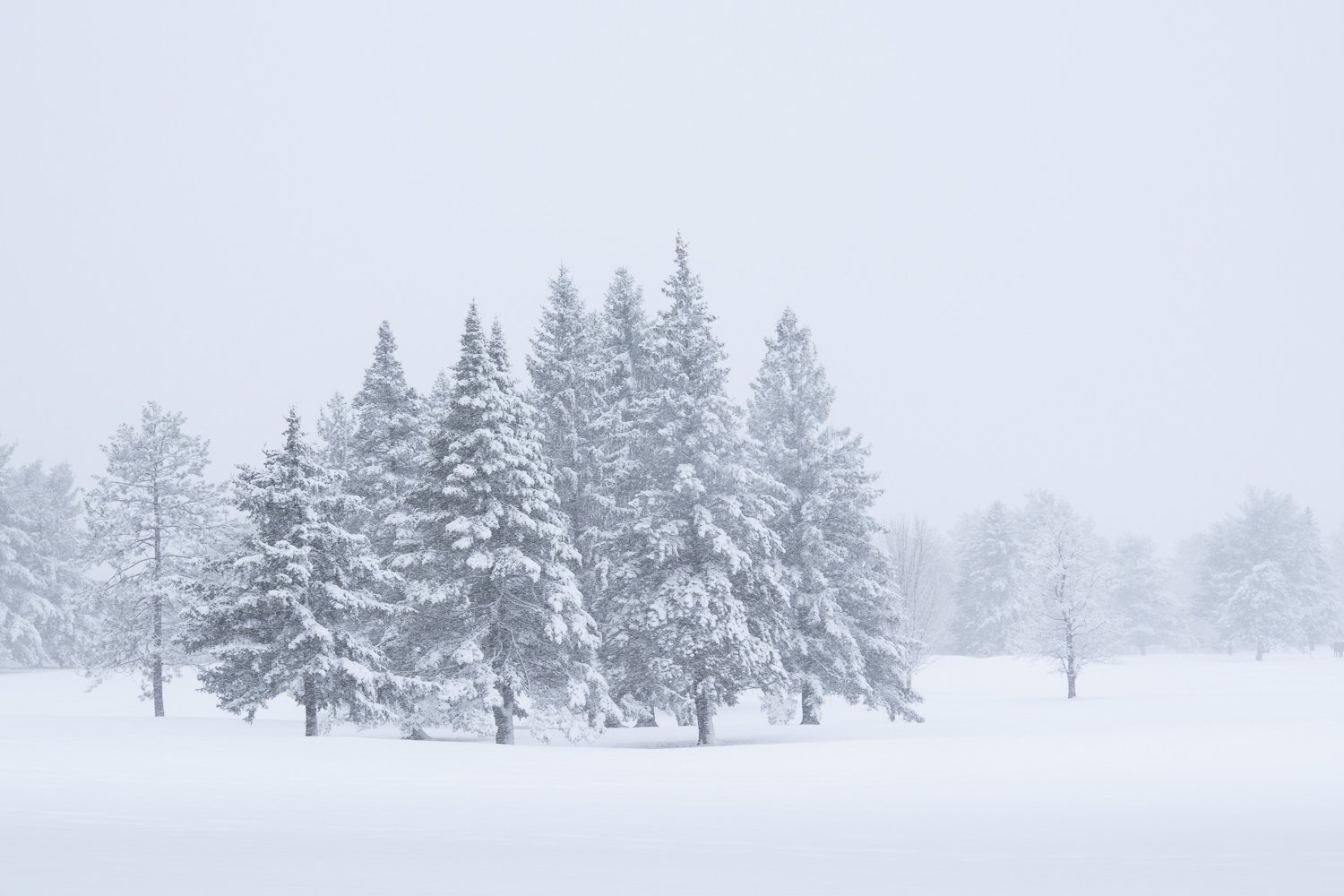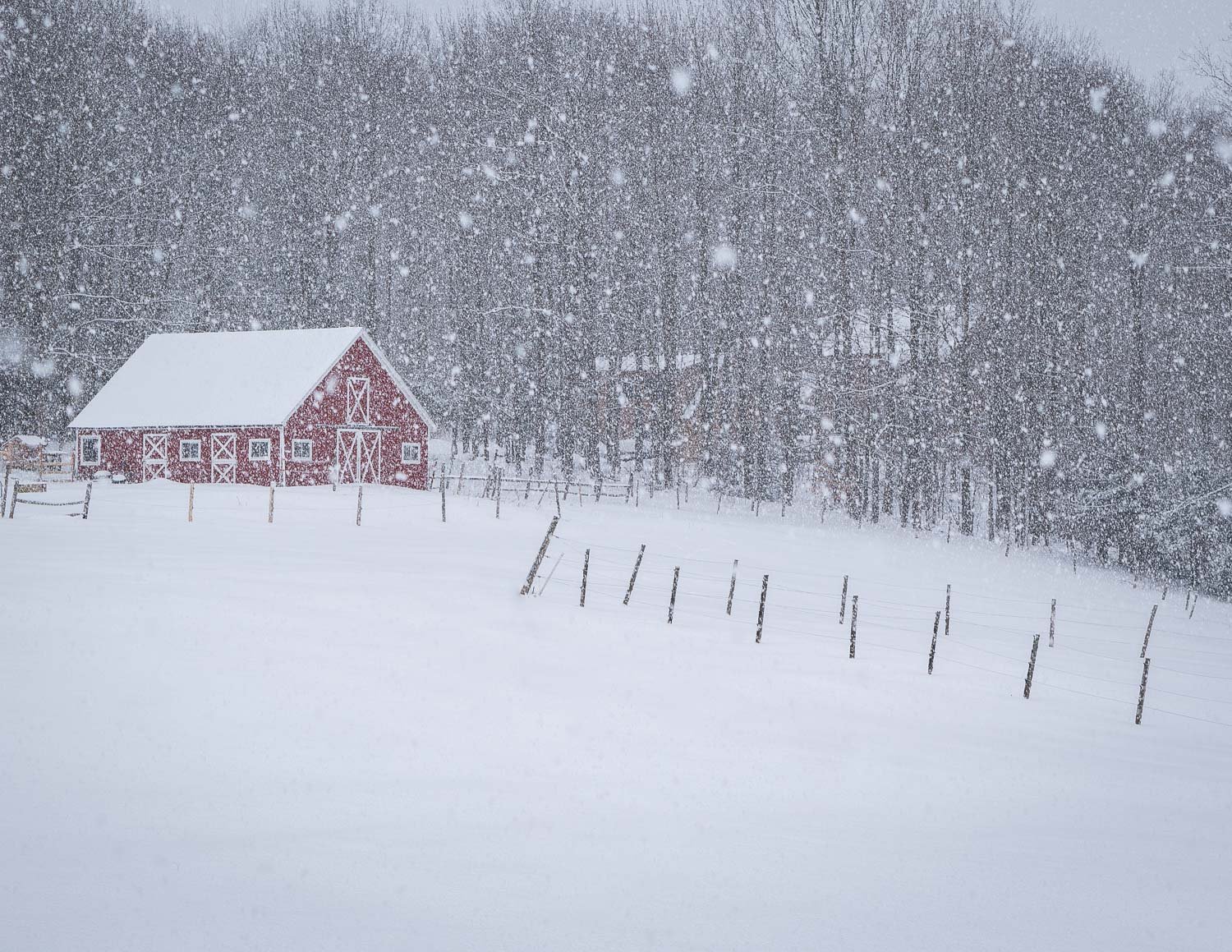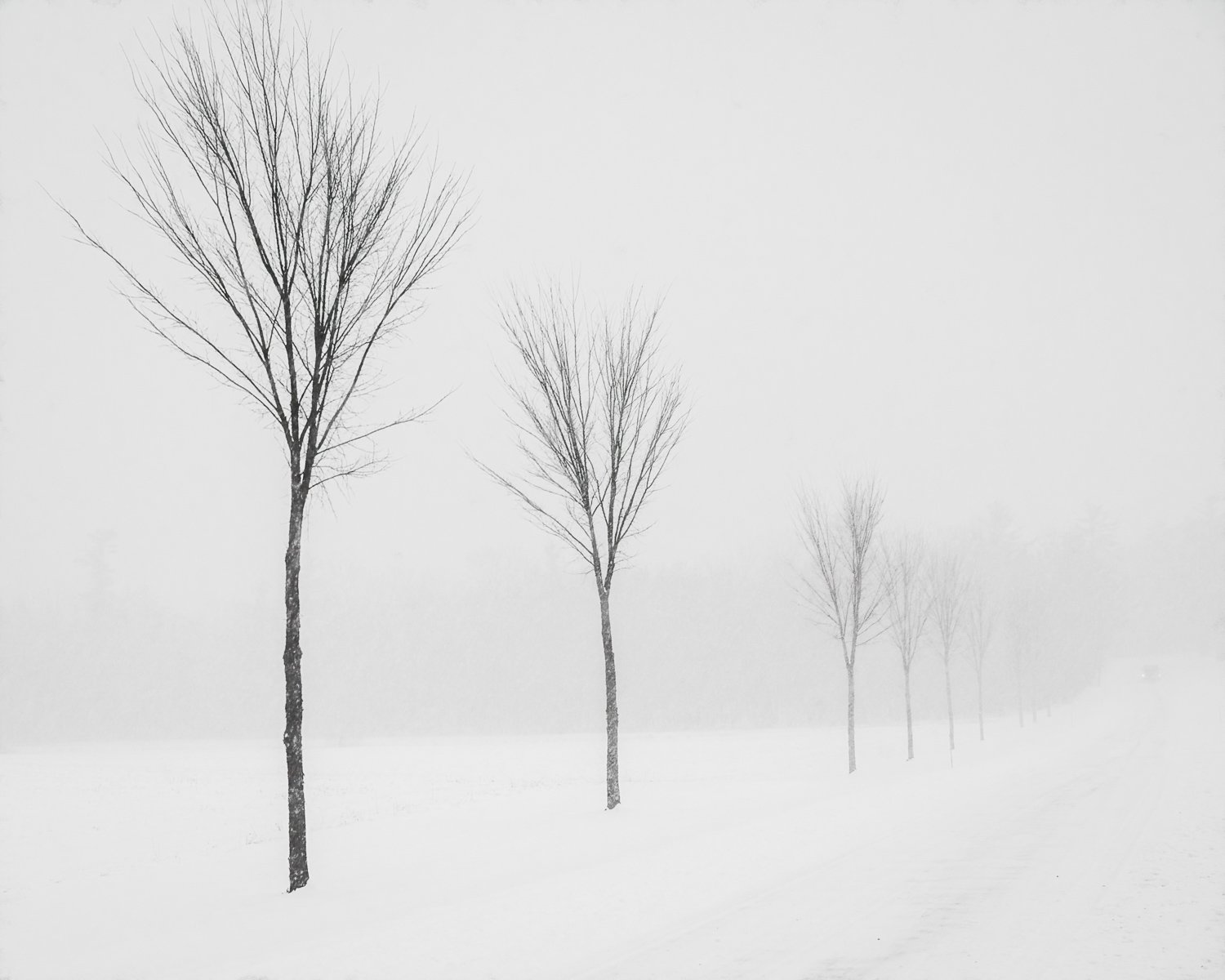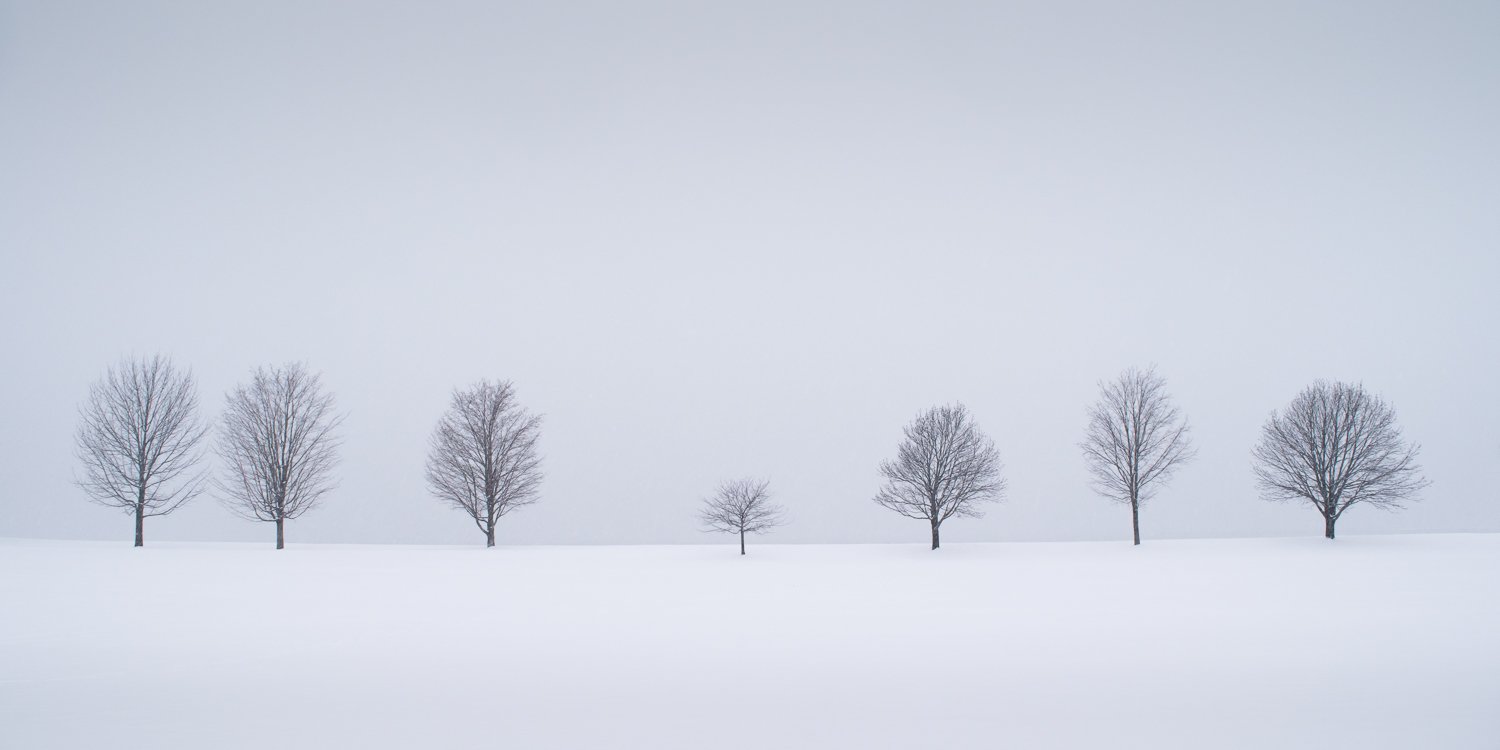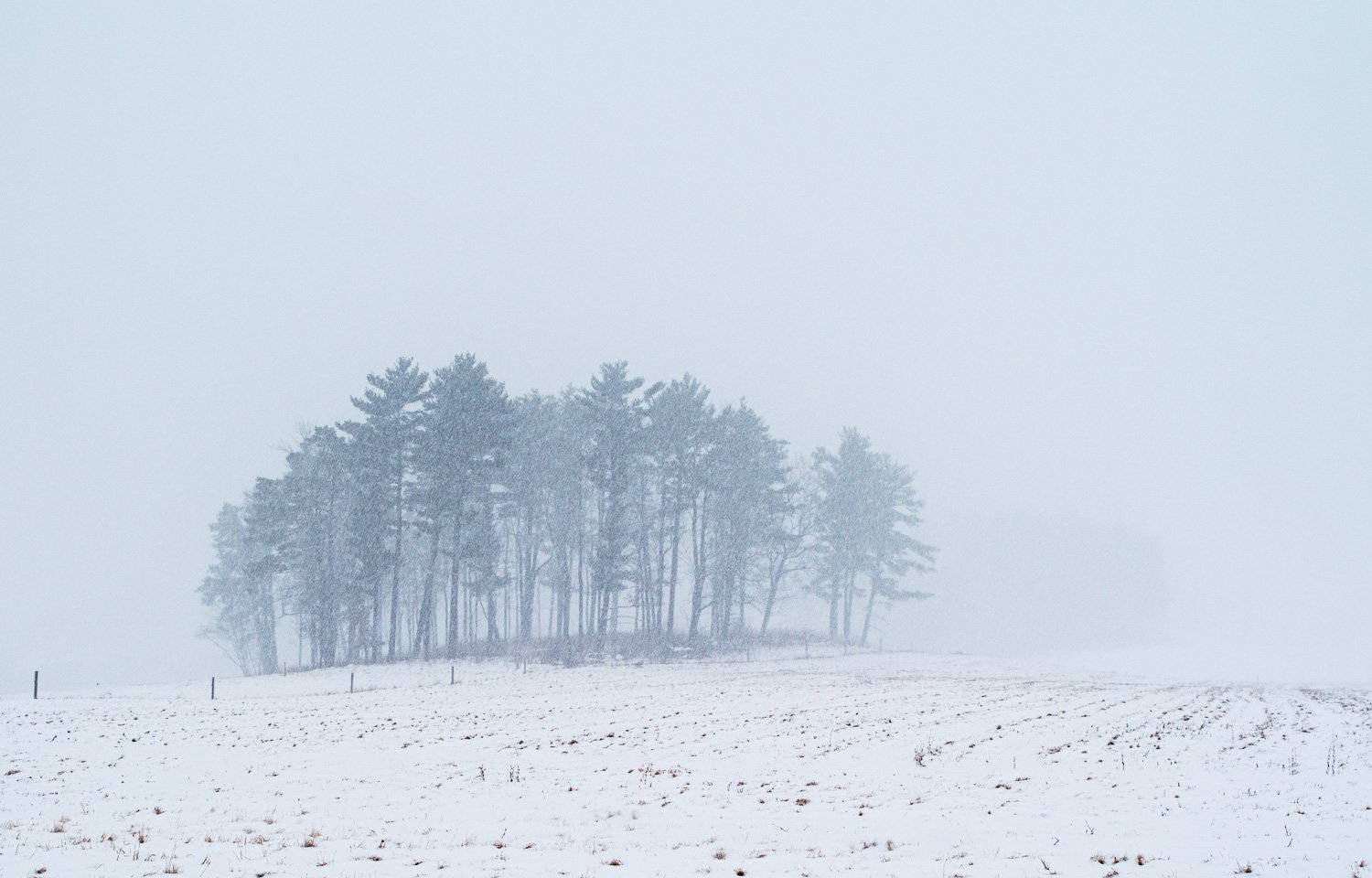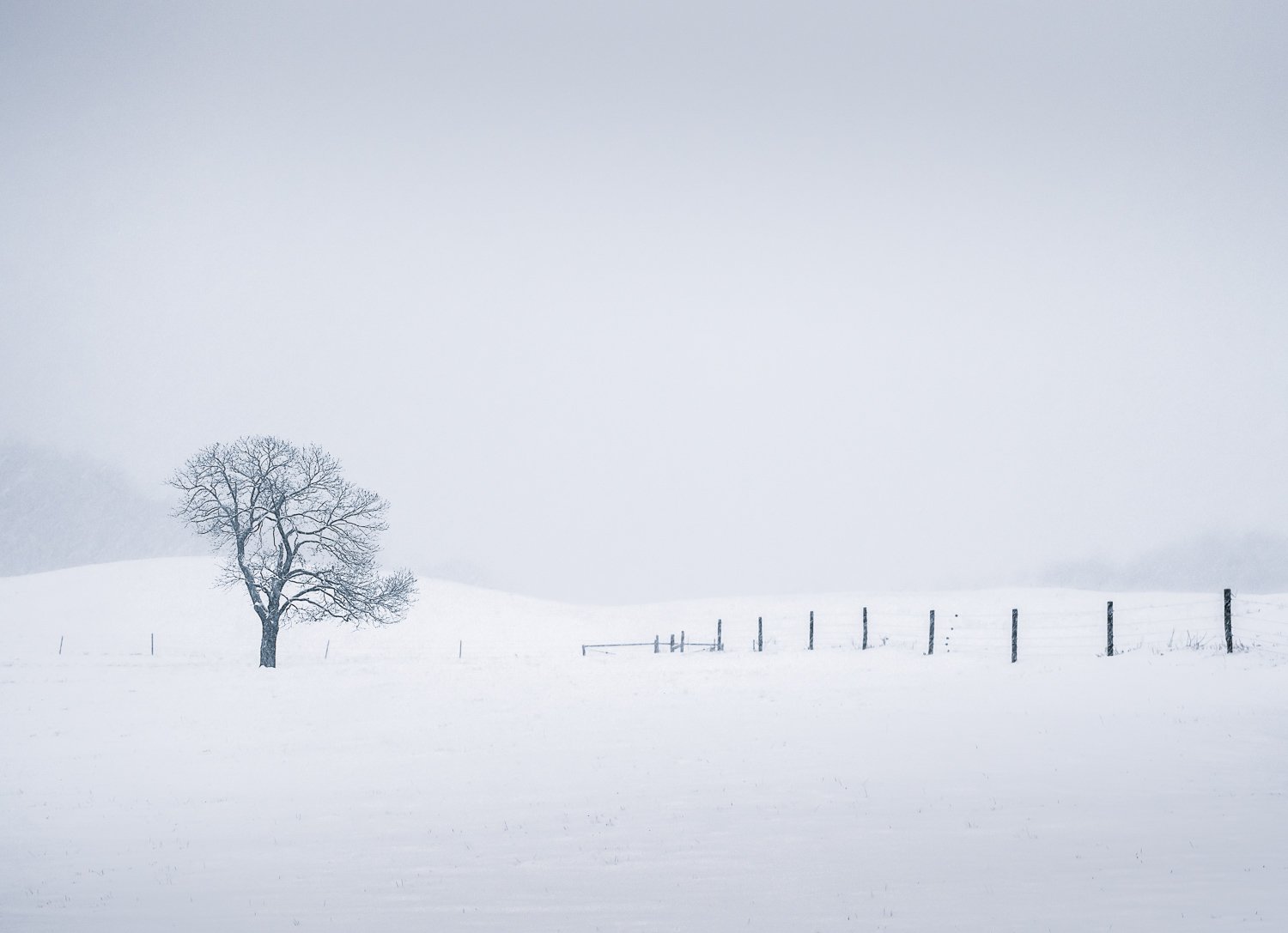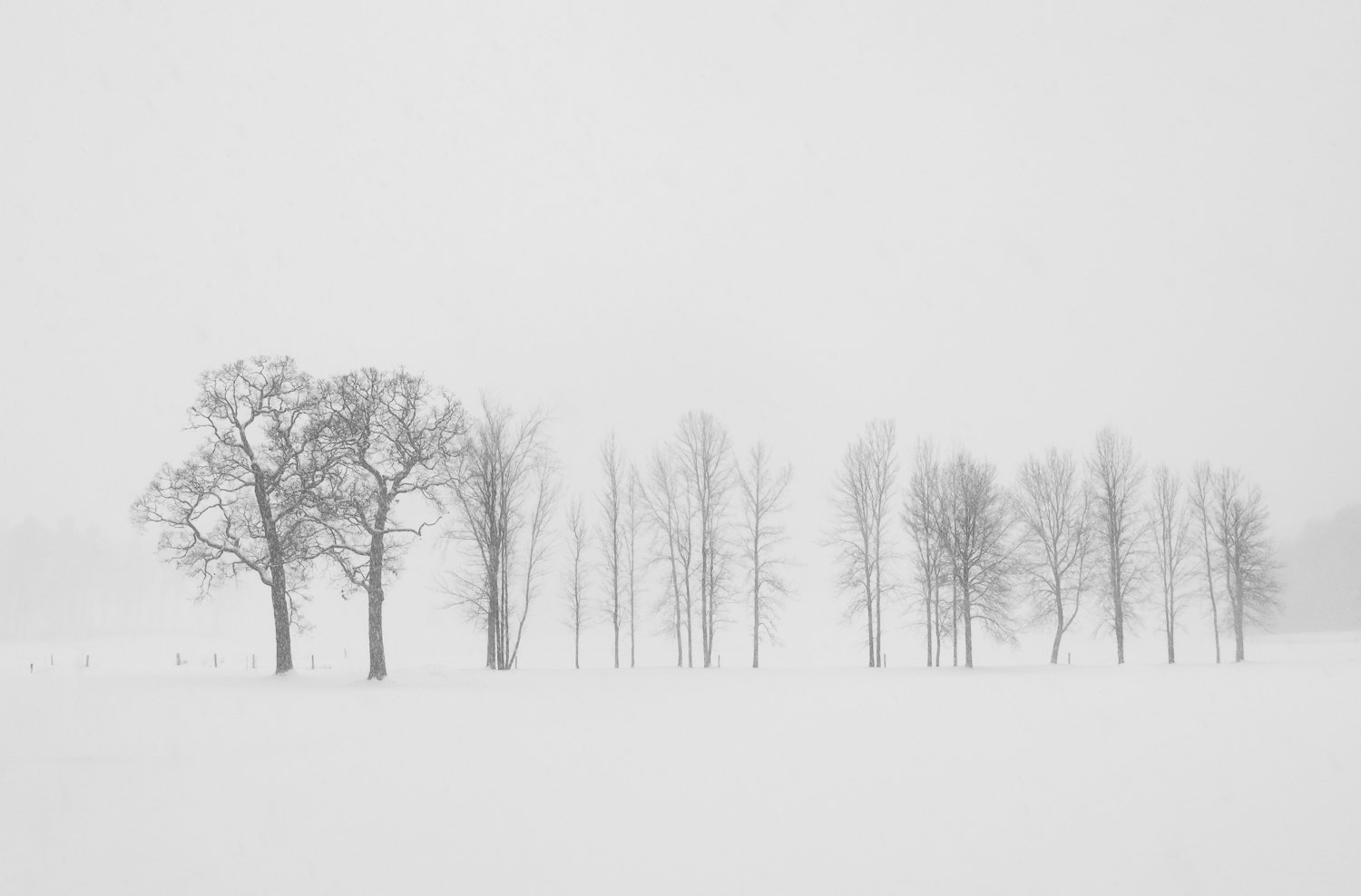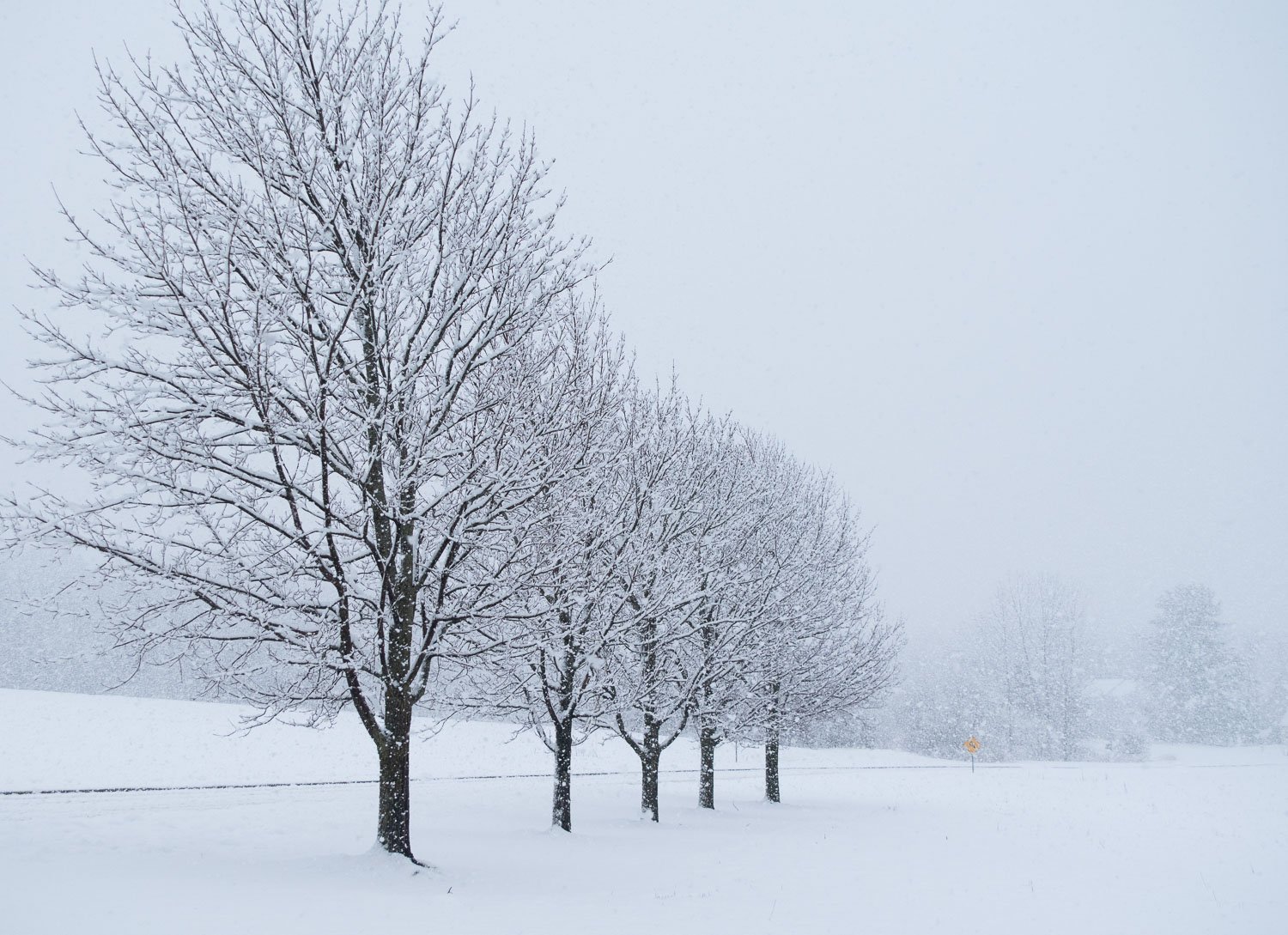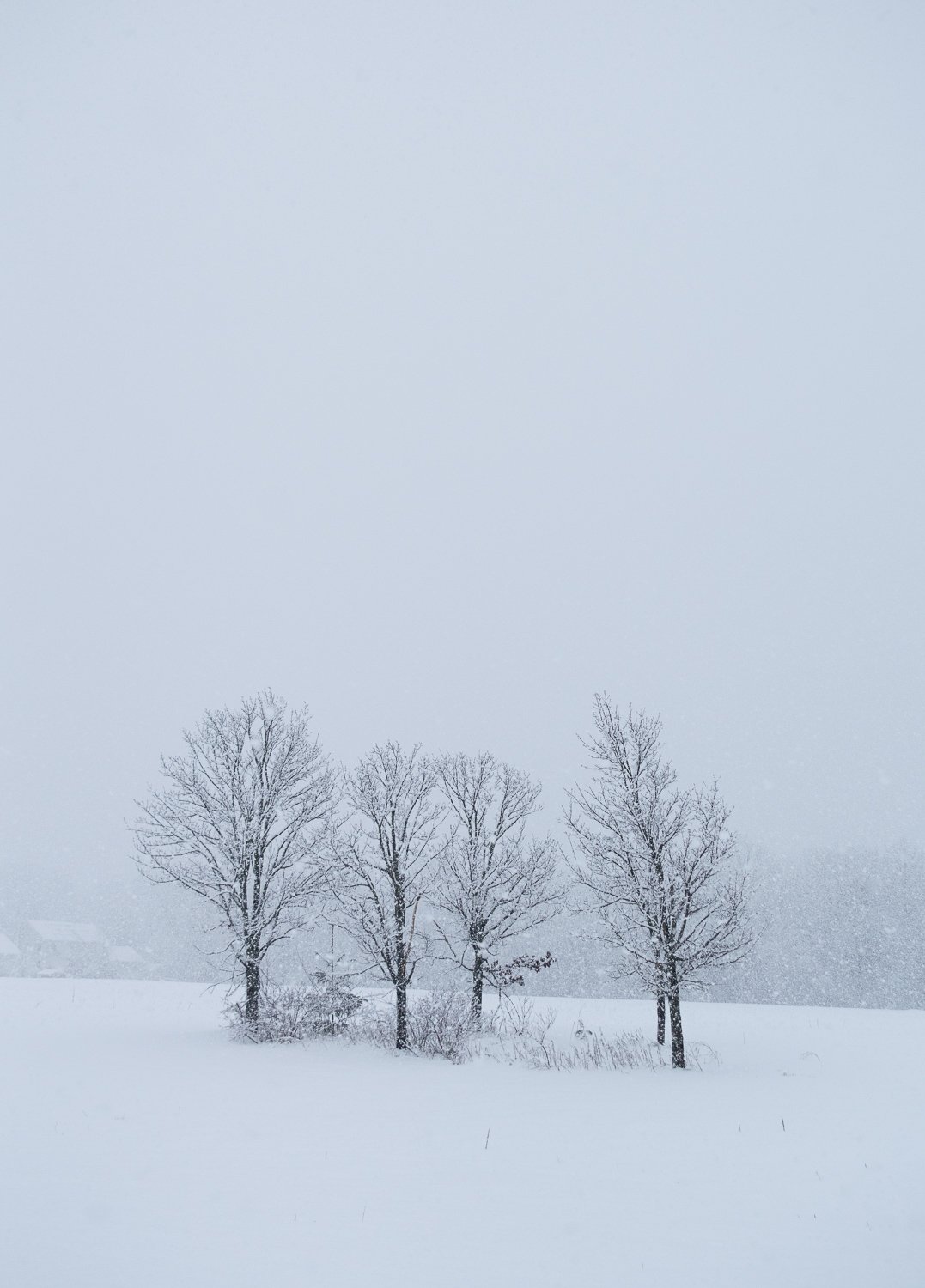snowstorm challenge
The benefits of shooting images during the winter season are many, not least of all providing a reason to get outside and connect with nature.
Snow covered landscapes offer scenes devoid of distraction, the form of barren trees set against snow perfect for minimalistic images. Snowstorms offer the brave photographer further advantages; falling snow adds mood to an image and can be used as a veil to isolate the subject from a distant background.
But with these advantages comes additional challenges that need to be considered prior to heading out into the snow.
Challenges
Safety
Weather
If planning to shoot in a storm the forecasted weather needs to be monitored. If snow is in the forecast, check the expected rate of fall before heading out and during the shoot as appropriate.
Driving conditions
Winter weather driving conditions can be extremely hazardous. Prolonged storms make it difficult for snowplows to keep main highways clear, with minor roads barely cleared at all.
Vehicles should be adequately equipped for the challenge, preferably with 4 wheel drive and fitted with snow tires or chains.
Above all else err on the side of caution and make an early decision to turn back should you become uneasy with conditions.
Comfort
It is easy to underestimate how cold a prolonged exposure to the environment may get. Be sure to pack layers of clothing, complete with hat, facemask and gloves to protect exposed skin from icy winds and frostbite.
As hands may be in and out of gloves consider taking packs of disposable handwarmers to help keep fingers thawed.
Shooting challenges
Now that you have made it to location there are several considerations that should be made.
Camera protection
Falling snow can be wet, and as with rain can be problematic to your camera. Be prepared with an appropriate cloth to periodically wipe of light moisture, or if snow is heavy consider some sort of cover/protection.
Exposure compensation
Typical snowstorm histogram
Due to the prevalence of snow expect the camera to significantly under expose. This can be compensated in-camera as required, in all cases I suggest making decisions based on a review of the histogram.
My opinion is that as long as highlights and shadows remain within limits compensation may be adequately achieved during processing.
Shutter speed
Falling snow is a moving object, so as such shutter speed so should be selected accordingly. This will typically require a fast speed to freeze the flakes, and is one scenario where increasing the ISO in order to do so will have little impact on the final result.
Snow falling in front of the lens
While falling snow does wonders for a scene, any flakes that fall directly in front of the lens can be a nightmare. The manifestation of this is large grayish blobs that may be witnessed throughout the image.
To overcome this problem, I recommend taking multiple shots for each composition, and select the least impacted for processing.
Even if lucky some amount of spot removal should be expected (at artistic discretion), but processing becomes a lot easy if key subject areas are clear of major intrusions.
Tripod
To be truthful I no longer consider using a tripod for such landscapes. Securing the legs of a tripod in deep snow can be challenging and adds to the time both camera and operator are exposed to the elements. Make the decision to use or not at your own discretion.
Results
Following is a variety of my own snowstorm attempts. Reviewing these brings back vivid recollections of the sense of peaceful isolation working in a snowstorm brings.
